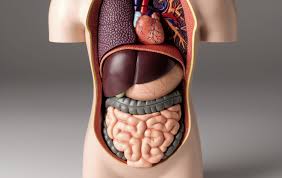By Rhodilee Jean Dolor
Seventeen people die everyday waiting for an organ transplant, according to data from the U.S. Department of Health and Human Services (HHS). Over 100,000 men, women and children are also currently on the national transplant waiting list, underscoring the grim situation of patients who need to undergo the life-saving operation.
Amid the current organ shortage crisis, researchers are inching closer to a potential solution that could serve as a lifeline for thousands of patients worldwide: xenotransplantation, the transplantation of organs or tissues from one species to another.
Pig Liver Transplanted into Brain Dead Patient
In March, researchers in China transplanted a gene-edited pig liver into a human recipient in a breakthrough operation that lasted for six hours and 15 minutes.
According to Xinhua, a medical team at the Xijing Hospital of the Air Force Military Medical University transferred the pig liver to a 50-year-old man who was certified as brain dead in three evaluations.
The liver was sourced from a genetically modified Bama miniature pig, a genetically stable breed that shares anatomical and physiological similarities with humans. The characteristics of the animal make it an excellent candidate for use in xenotransplantation research.
The transplanted liver produced bile in the human recipient’s body, indicating that the organ was working. The researchers of the study neither saw signs of immune rejection after the surgery.
The liver also functioned for 10 days until the organ was surgically removed as requested by the patient’s family who consented to the operation to contribute to medical advancement.
“This is the first time in the medical field that a genetically modified pig liver has been transplanted into a human body,” said Kefeng Dou, an academician at the Chinese Academy of Sciences, who guided the operation. “We observed that the liver functioned well in the human body.”
Hope for Liver Disease Patients
According to a study published in the Journal of Hepatology in March 2023, liver disease is among the leading causes of death worldwide. The illness is behind 2 million deaths per year, or one in every 25 deaths worldwide.
Study researcher Sumeet Asrani, from Baylor University Medical Center, and colleagues said that only a few are able to receive a liver transplant despite the high demand for the procedure.
“Liver transplantation is the second most common solid organ transplantation after kidney transplantation worldwide. However, less than 10% of global needs of organ transplantation are met at current rates of transplantation,” Asrani and colleagues wrote. “The overall global liver transplantation rate is 3.7 per million population (PMP). Many countries in Asia have organ donation rates of less than 1 PMP.”
Dou cited the importance of research and application of xenogeneic liver transplantation given the large number of liver disease patients and the current shortage of organs for transplantation.
He said that their study is a significant breakthrough in the field of xenotransplantation as it provided a theoretical basis and practical experience for future clinical applications.
“In the future, with continuous technological advancement, xenogeneic liver transplantation is expected to bring great benefits to more patients and become an effective approach to solving the problem of organ shortage for transplantation,” Dou said.
Xenotransplantation for Man with End-stage Kidney Disease
US doctors also conducted a similar surgery involving pig kidney. On March 16, surgeons from the Massachusetts General Hospital (MGH) also successfully transplanted a genetically-edited pig kidney into a 62-year-old patient with end-stage renal disease.
The medical team used a kidney from a pig that was engineered using the gene editing tool CRISPR-Cas9 to remove harmful pig genes and add human genes. The porcine endogenous retroviruses in the genomes of the pig were also inactivated to eliminate the risk of infection.
The four-hour long procedure was performed under a single FDA Expanded Access Protocol (EAP), also called “compassionate use”, which is granted to patients with serious and life-threatening conditions to gain access to experimental treatments when no other comparable treatment options exist.
Richard Slayman, the recipient in the operation, has been living with Type 2 diabetes and hypertension for many years. In December 2018, after being on dialysis for seven years, the Weymouth, Massachusetts resident received kidney from a deceased human donor but the organ showed signs of failure five years later.
He explained why he agreed to get the pig kidney transplant after learning the pros and cons of the procedure.
“I saw it not only as a way to help me, but a way to provide hope for the thousands of people who need a transplant to survive,” Slayman said.
Most Common Organ Needed for Transplant
Data from the Organ Procurement and Transplantation Network (OPTN), which maintains the US database of information about candidate waiting lists and transplant surgeries, show that kidney transplant is the most common among organ transplants with 27,332 performed as of March 2024.
Unfortunately, there is a long queue of patients who need to get the operation. The OTPN data shows that 89,101 people require a kidney transplant as of March 2024, the highest number on the waiting list for any single organ.
“At MGH alone, there are over 1,400 patients on the waiting list for a kidney transplant. Some of these patients will unfortunately die or get too sick to be transplanted due to the long waiting time on dialysis,” said MGH Medical Director for Kidney Transplantation Leonardo Riella.
Many see xenotransplantation as a potential answer to the organ shortage crisis. In a survey conducted by the National Kidney Foundation, 71% of the respondents said that they would consider a xenotransplant for a loved one if there are no available organ or tissue from a human.
It may still take more time and research before animal organs can be used for transplantation, but some doctors and researchers see the procedure as a potential lifesaver for critically ill patients.
“I am firmly convinced that xenotransplantation represents a promising solution to the organ shortage crisis,” Riella said.





